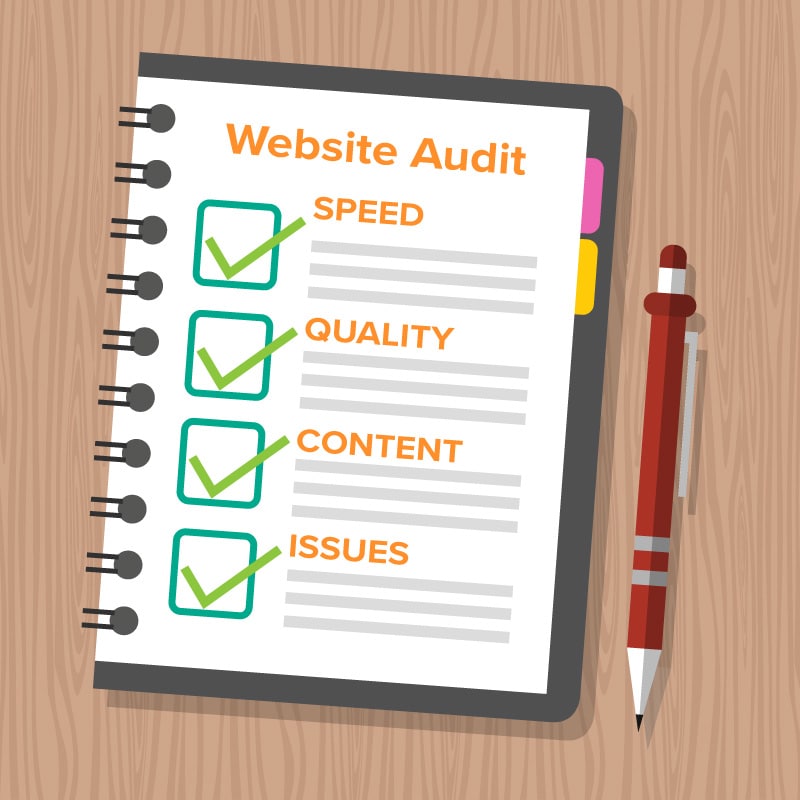555

How to Conduct a Website Audit: Steps and Tools
- By Admin
- |
- 67 Comments
For any business, ensuring your website is in top-notch condition is crucial for success. A comprehensive website audit is like a health check-up for your site, helping you identify and fix issues that could be holding you back. Whether you're aiming to boost your SEO, improve user experience, or enhance security, a website audit is your first step. But where do you start? Let's dive in.
Understanding the Basics of a Website Audit
A website audit is a thorough examination of your website to assess its performance, functionality, and overall health. The main purpose is to identify issues that could affect your site's effectiveness and user experience. Key components include technical elements, SEO factors, content quality, and user experience (UX).
Preparing for a Website Audit

Before you dive into the audit, set clear objectives. Are you focused on improving SEO, boosting speed, enhancing user experience, or all of the above? Once you have your goals, gather the necessary tools and resources. You'll need a mix of analytical tools, SEO software, and user feedback.
Technical Audit
Start with the technical aspects of your site.
1. Checking Website Speed: Use tools like Google PageSpeed Insights or GTmetrix to analyze your site's load times. Slow websites frustrate users and hurt your SEO.
2. Ensuring Mobile-Friendliness: With more users browsing on mobile devices, ensuring your site is mobile-friendly is crucial. Google's Mobile-Friendly Test can help.
3. Verifying SSL and Security Measures: Check that your site uses HTTPS and has valid SSL certificates. This boosts user trust and SEO.
SEO Audit
An SEO audit examines both on-page and off-page elements and is achieved through the following steps
1. Analyzing On-Page SEO Elements:
- Title Tags and Meta Descriptions: Ensure these are unique, descriptive, and keyword-optimized.
- Header Tags and Content Structure: Proper use of H1, H2, and H3 tags helps search engines understand your content.
2. Assessing Off-Page SEO Factors:
- Backlink Profile: Use tools like Ahrefs or Moz to analyze your backlinks. Quality over quantity is key.
- Social Signals: Check your social media engagement and how it's driving traffic to your site.
Content Audit
A content audit ensures your site’s content is relevant, engaging, and SEO-friendly.
- Evaluating Content Quality: Look for outdated, thin, or irrelevant content and update or remove it.
- Identifying Content Gaps and Opportunities: Find topics your audience cares about but aren't covered on your site.
- Checking for Duplicate Content: Use tools like Copyscape to identify and fix duplicate content issues.
User Experience (UX) Audit
User experience is critical for keeping visitors on your site. This feature involves various interface development and checks.
- Analyzing Navigation and Site Structure: Ensure your site is easy to navigate and logically structured.
- Ensuring Accessibility and Usability: Make sure your site is accessible to users with disabilities.
- Reviewing Design and Layout: A clean, intuitive design enhances user engagement.
Performance Audit
A performance audit focuses on your site's speed and functionality. A higher performance score will lead to better rankings for your site.
- Measuring Site Speed and Performance: Tools like Google PageSpeed Insights can help you identify areas to improve.
- Using Performance Testing Tools: Tools like Lighthouse or WebPageTest provide in-depth performance analysis.
Security Audit
Security should never be overlooked. The website's HTTPS connection is viewed in this audit.
- Checking for Vulnerabilities: Use security tools to scan for vulnerabilities and fix them promptly.
- Implementing Security Best Practices: Ensure you follow best practices like regular updates, backups, and using secure passwords.
Audit Tools and Resources
You can perform audit of your site using several tools, which are:
- Google Analytics: For tracking and analyzing website traffic.
- Google Search Console: For monitoring and maintaining your site's presence in Google Search results.
- SEMrush: A comprehensive tool for SEO and competitive analysis.
- Ahrefs: Great for backlink analysis and SEO audits.
- Screaming Frog: Useful for in-depth site crawling and technical audits.
Analyzing and Interpreting Audit Results
Once you have the audit data, it's time to analyze and interpret the results.
- Prioritizing Issues: Focus on critical issues that significantly impact your site’s performance and user experience.
- Creating an Action Plan: Develop a plan to address these issues, assigning tasks and deadlines.
- Fixing Technical Issues: Address site speed, mobile-friendliness, and security vulnerabilities first.
- Improving SEO Practices: Optimize title tags, meta descriptions, and content structure.
- Enhancing Content Quality: Update, rewrite, or remove outdated content.
- SEO and Content Marketing
- website, audit, steps, website audit steps
(67) Comments


555

555

555

IcG4lAFm

-1 OR 2+383-383-1=0+0+0+1 --

-1 OR 2+686-686-1=0+0+0+1

-1' OR 2+837-837-1=0+0+0+1 --

-1' OR 2+356-356-1=0+0+0+1 or '7ZYSeWa9'='

-1" OR 2+692-692-1=0+0+0+1 --

if(now()=sysdate(),sleep(15),0)

0'XOR(if(now()=sysdate(),sleep(15),0))XOR'Z

0"XOR(if(now()=sysdate(),sleep(15),0))XOR"Z

(select(0)from(select(sleep(15)))v)/*'+(select(0)from(select(sleep(15)))v)+'"+(select(0)from(select(sleep(15)))v)+"*/

-1; waitfor delay '0:0:15' --

-1); waitfor delay '0:0:15' --

1 waitfor delay '0:0:15' --

-5 OR 329=(SELECT 329 FROM PG_SLEEP(15))--

-5) OR 792=(SELECT 792 FROM PG_SLEEP(15))--

-1)) OR 516=(SELECT 516 FROM PG_SLEEP(15))--

X2vJAOJT' OR 419=(SELECT 419 FROM PG_SLEEP(15))--

yotytwtQ') OR 702=(SELECT 702 FROM PG_SLEEP(15))--

wSwtwnuq')) OR 524=(SELECT 524 FROM PG_SLEEP(15))--

555*DBMS_PIPE.RECEIVE_MESSAGE(CHR(99)||CHR(99)||CHR(99),15)

555'||DBMS_PIPE.RECEIVE_MESSAGE(CHR(98)||CHR(98)||CHR(98),15)||'

1'"

@@wlmdw

555

555

555

555

555

555

555

555

555

555

555

555

555

555

555

555

555

555

555

555

555

555

555

555

555

555

555

555

555

555

555

555

555

555

555

555

555

555

555
555